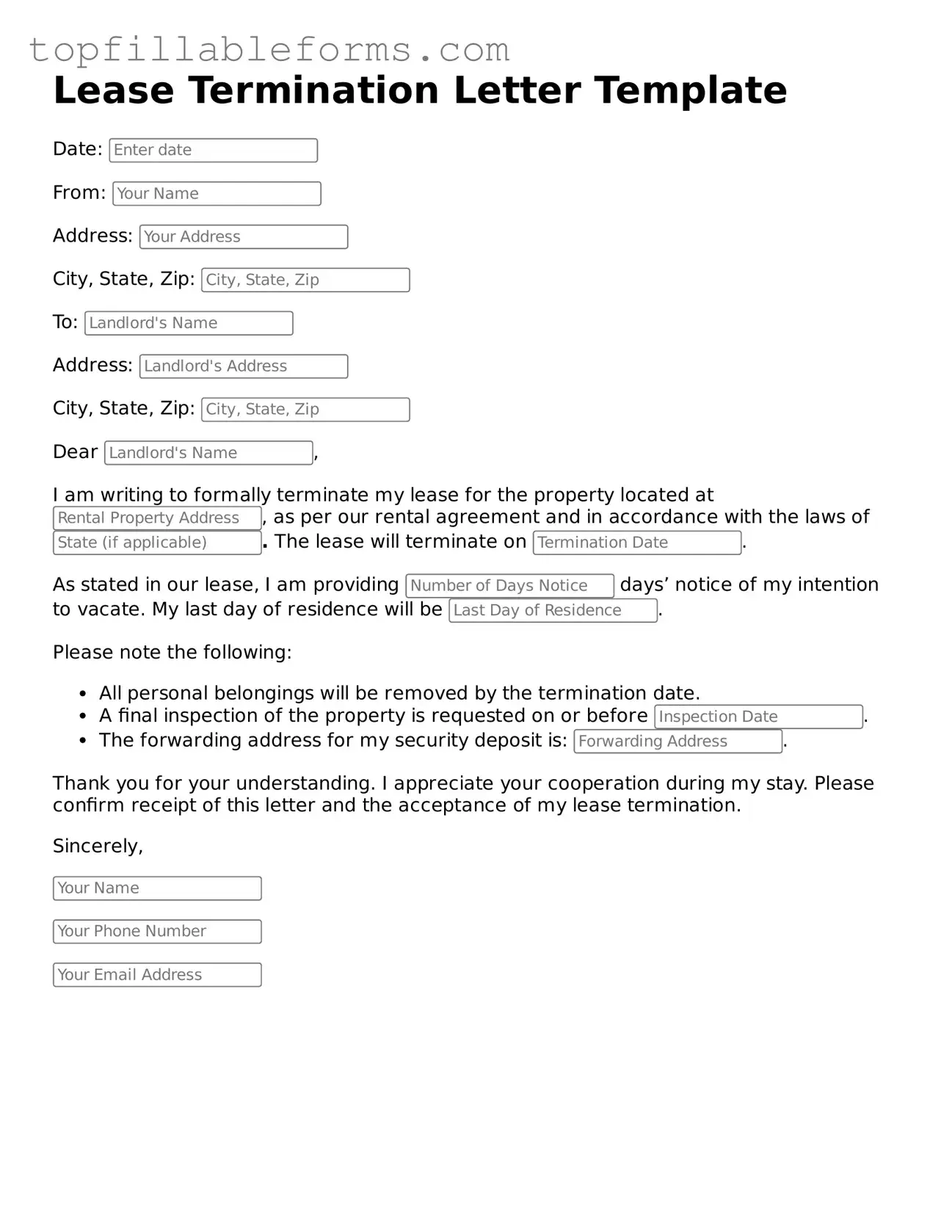Free Lease Termination Letter Form
A Lease Termination Letter is a formal document used by tenants or landlords to notify the other party of the intent to end a lease agreement. This letter serves as a crucial communication tool, outlining the reasons for termination and providing important details about the move-out process. Understanding how to properly draft and deliver this letter can help ensure a smooth transition for both parties involved.
Open Lease Termination Letter Editor Here
